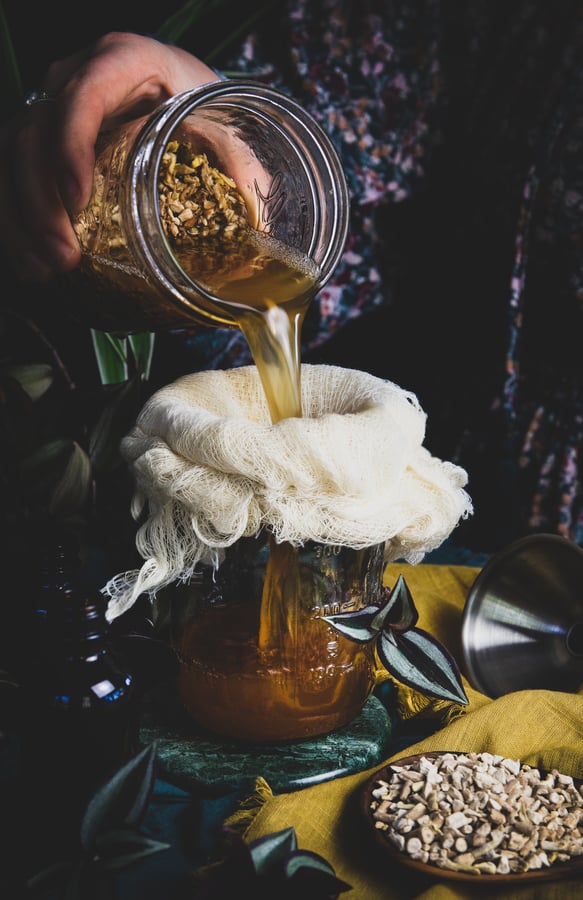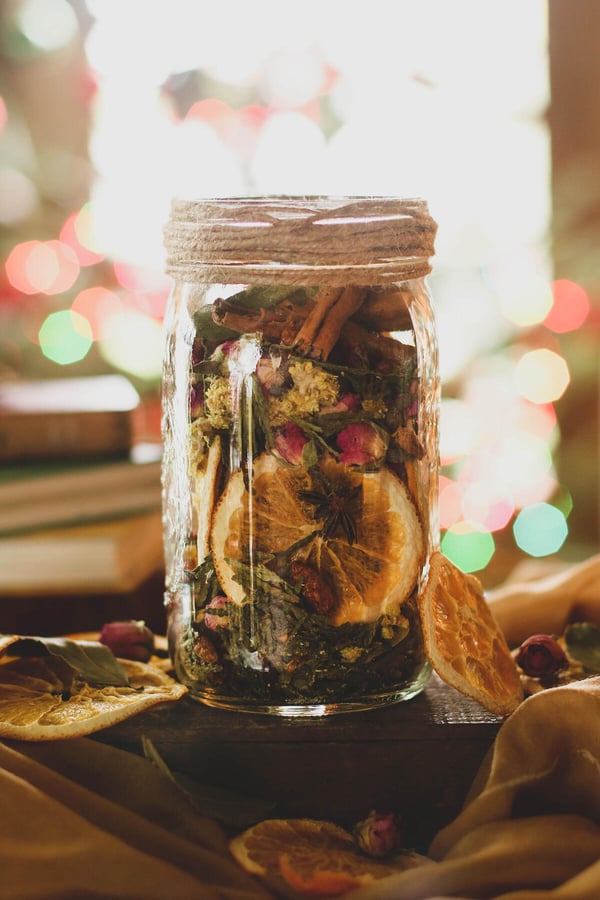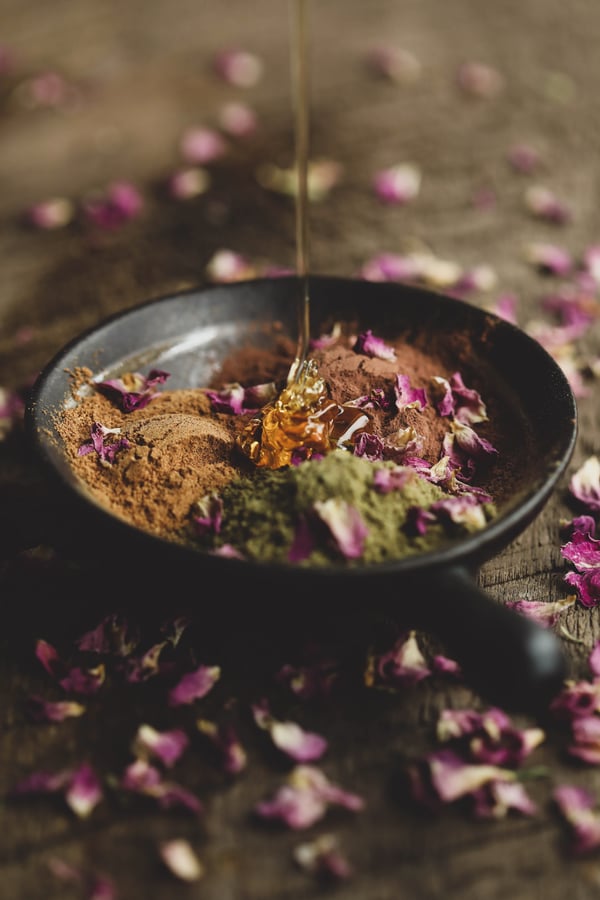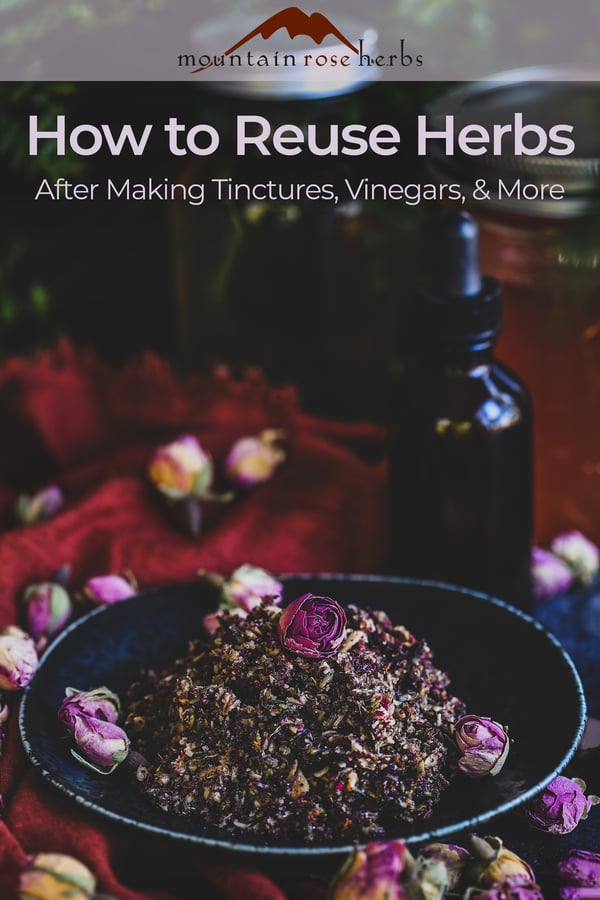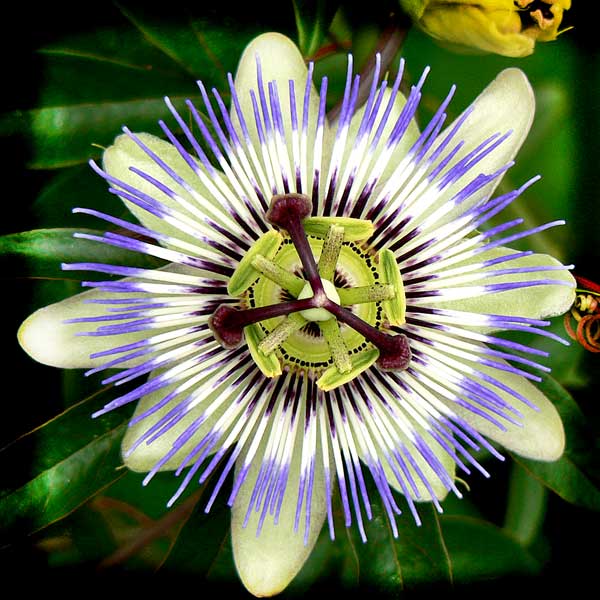If you’re like me, you aim to not waste any of your herbal ingredients—you understand that hard-working pollinators and farmers put a lot of love and care into getting the finest organic botanicals into your cupboard. This is why I began exploring ways to reuse my herbs after making herbal preparations. Through years of making tea, infused oils, tinctures, vinegars, and honeys, I’ve tinkered up some fun ways to upcycle the remaining plant material, often called the “marc,” into other fine uses and crafts.
Here are some of my favorite ways to use every drip, drop, and crumb of botanical goodness from herbs. Keep in mind that some of these ideas are good for some herbs and not for others. For example, some highly medicinal herbs may not be ideal to add to a soup you are serving others. These are general ideas to get you started and serve as inspiration for you to make some of your own secondary preparations. Happy upcycling!
Creative Ways to Reuse Herbs After Making Tea or Herbal Infusions
- Brew a second or third time: By using your tea ingredients in another pot of tea, you are getting the very most of each herb. I like to sprinkle an additional 10% of fresh tea on the top to give it some of the top notes that may not be present in a second or third brew. With this little tip, you will hardly taste the difference and will be surprised at how rich the color still is.
- Soups and sauces: If the herbs are appropriate for culinary purposes, partially dry herbs, and place in a freezer bag, being sure to label the ingredients. Add to soups or other culinary recipes.
- Compost: When you are finally done, be sure to compost your tea!
What to Do With Herbs After Making Herbal Oils
Herbal oils have always been my biggest driver when it comes to upcycling. Since oils are not generally the best for compost piles, I knew I needed to find some ways to reuse the marc from herb-infused oils.
- Face exfoliant: After straining the oil, add herbs to a blender and blend on high until they are finely ground. Take a spoon and test the mixture. If it’s too rough, add back to the blender until you reach the desired consistency. If too soft, add some more exfoliating ingredients such as jojoba meal or oats.
- Salt or sugar body scrub: Follow instructions above but instead of using directly, add salt or sugar for a more exfoliating body scrub.
- Add to culinary dishes: If herbs lend themselves to culinary preparations. freeze oil-soaked herbs in a bag or jar and label with ingredients. You can also blend with salt and use as an herbal bouillon. Adding salt will also help the mixture to be more scoopable after it is frozen.
- Make herbal fire starters: Mix with beeswax to make herbal fire starters.
- Herbal soap bars: I will admit that using upcycled herbs in soap is not the most beginner-friendly process as you will have to account for how much extra oil you are adding to the recipe. Only an experienced soap maker will know how to properly adjust for this, but it is possible once you get a recipe down.
Ways to Reuse Herbs After Making a Tincture
- Don’t strain it: Depending on how you typically take your tinctures, you can blend the herbs in the alcohol and use the herbs and extract in water, tea, or a smoothie. Alcohol helps to make certain constituents more bioavailable, so you have the dual benefit of getting the alcohol-soluble compounds in a way that assimilates into the body, and the benefits of the whole plant, which holds its own wellness properties.
- Dry and reuse as potpourri: Since alcohol is both drying and a preservative, drying tincture marc is quick and easy and it won’t spoil. You can then add the dried material to a potpourri blend with some essential oils to spruce up a restroom or laundry room.
- Make a spagyric: A spagyric is an herbal tincture made by herbal alchemists. The preparation is based on a philosophy that the whole plant is better than the sum of its parts. After an herbal tincture is made, the marc is then burned in a process called calcining that leaves behind white ash. This white ash is made up of pure soluble minerals from the plant. Those minerals, or salts, are then added back to the tincture, resulting in what some practitioners believe to be a more complete herbal extract.
- Compost: You can compost tincture marc, but keep in mind that if you add large volumes of tincture marc to a small compost pile, you can throw off its balance.
How to Reuse Herbs After Making Herbal Vinegars
- Seasoning blends: If the herbs you are using lend themselves to culinary applications, you can dehydrate the marc and use it in place of seasoning blends with similar ingredients. It will add a slight vinegar taste so just account for that in your recipe. (Hint: Fire cider makes a superb post-extraction seasoning blend!) As always, label the ingredients used!
- Soup stocks: Adding a little acid to soup adds a nice flavor pop. This is why freezing the marc left over from herbal vinegar is perfectly suited for this purpose.
- Add to bath or foot soak: Vinegar is very good for the skin, as are many herbs. Add your vinegar-soaked marc to a large tea ball or cotton muslin bag and use in a bath or a foot soak.
- Hair Rinse: Vinegar, especially apple cider vinegar, is great for the hair and scalp. Put your leftover marc into a jar and fill with just enough warm water to cover. Let soak for at least 30 minutes. Strain and squeeze the liquid out of the plant material. Add to a bottle and rinse your hair with the liquid in place of using conditioner. (Use within 2 days).
- Compost piles are perfectly happy with vinegar-soaked herbs, but you don’t want to add a large volume at one time as this can throw off its pH.
Upcycle Herbs After Making Herb-Infused Honey
- Use powdered herbs and don’t strain: If you use powdered herbs, you don’t actually have to strain them. Mixing herbal powders and honey together is an herbal preparation called an electuary.
- Add to tea: If you decide to use cut herbs and want to strain the honey completely, you can add the honey-covered herbs to an herbal tea. Yum!
- Add to baked goods: For baking recipes that aren’t very exact, you can sneak some honey-soaked herbs into the mixture or filling.
- Face Mask: Honey is one of the most skin-loving ingredients used in traditional natural skin care recipes. Blend your marc into a lovely facial exfoliant or mask.
- Body scrub: Use honey-soaked herbs and massage into skin. If the herbs are too large or too tough, you can place them in a blender, although I’d recommend using a small grinder, like a coffee grinder because large blenders used for small batches will result in a lot of waste and it won’t be worth the effort.
Pro Tips: As you can imagine, large volumes of herbs or oil can be problematic for plumbing. When applying oil-soaked herbs or general large volumes of herbs to your body, I recommend doing so over a cloth that can be shaken outdoors or use outside when weather permits.
I hope this offers some new ways to give new life to your herbal marc. Feel free to leave your fun and creative ways to reuse herbal allies in the comment section below!
Looking for other ways to get the most out of your herbs?
Creative Ways to Use Up Herbs and Spices Past Their Freshness Date
You may also enjoy:

